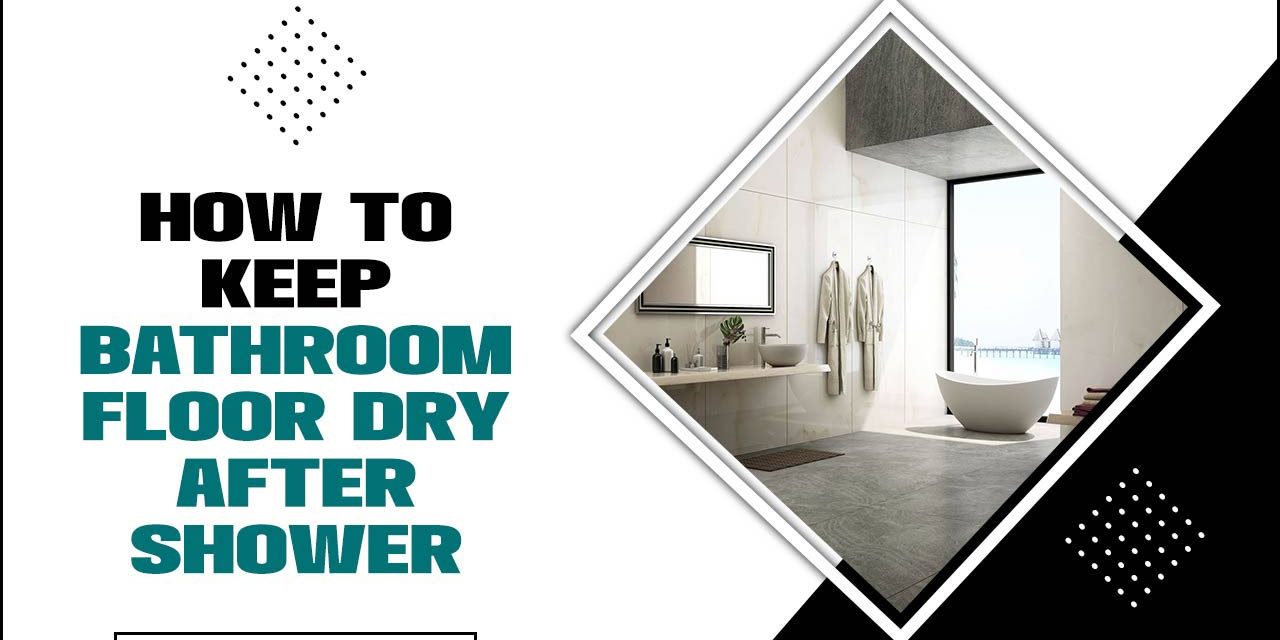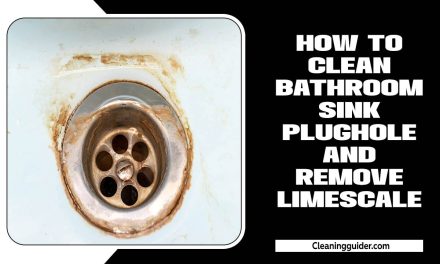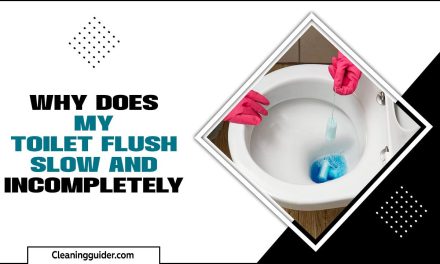A bathroom is a space that encounters a lot of moisture due to its daily use. One of the biggest challenges homeowners face is keeping their bathroom floors dry after showering.
Not only can a wet bathroom floor be a safety hazard, but it can also lead to water damage and mold growth if left unattended. As such, it is essential to have a proper routine to ensure your bathroom floor stays dry and clean.
Here we will discuss the consequences of a wet bathroom floor, why it becomes wet, and how to prevent it from happening in the first place. We will also provide you with seven easy steps on how to keep bathroom floor dry after shower, including installing a shower enclosure, opting for water-resistant tiles, placing a bath mat, and using a dehumidifier.
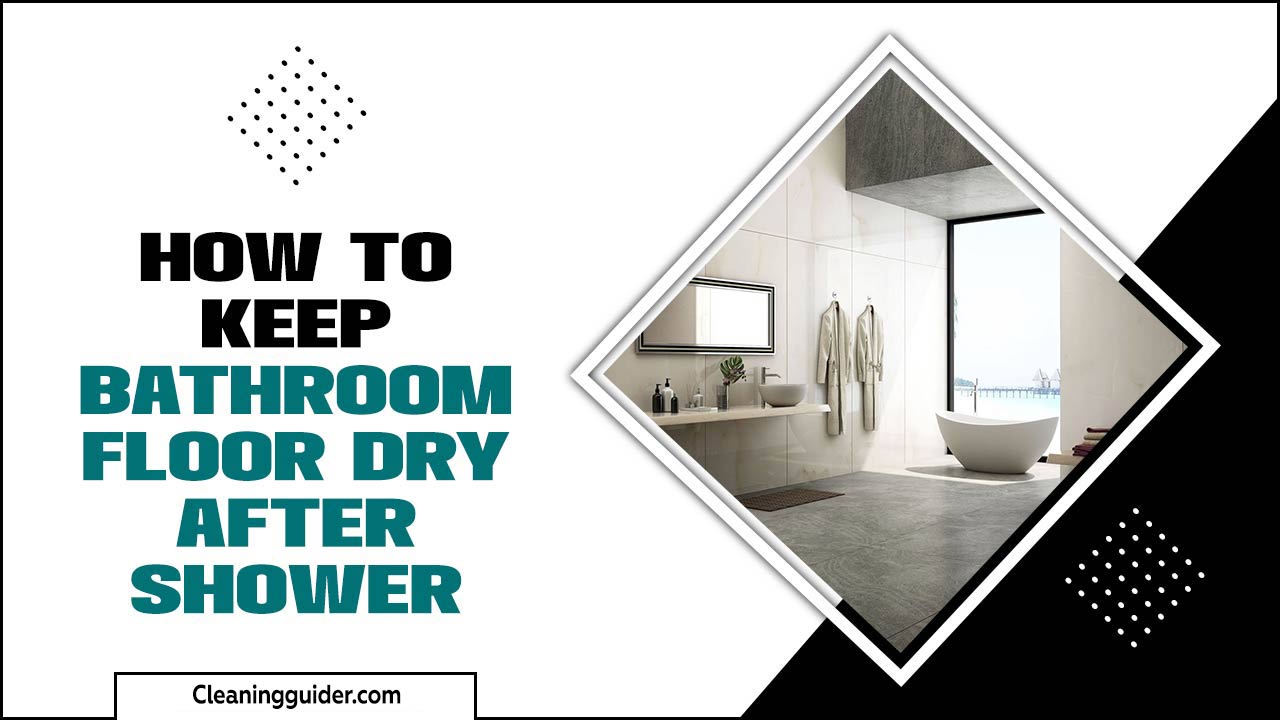
The Consequences Of A Wet Bathroom Floor
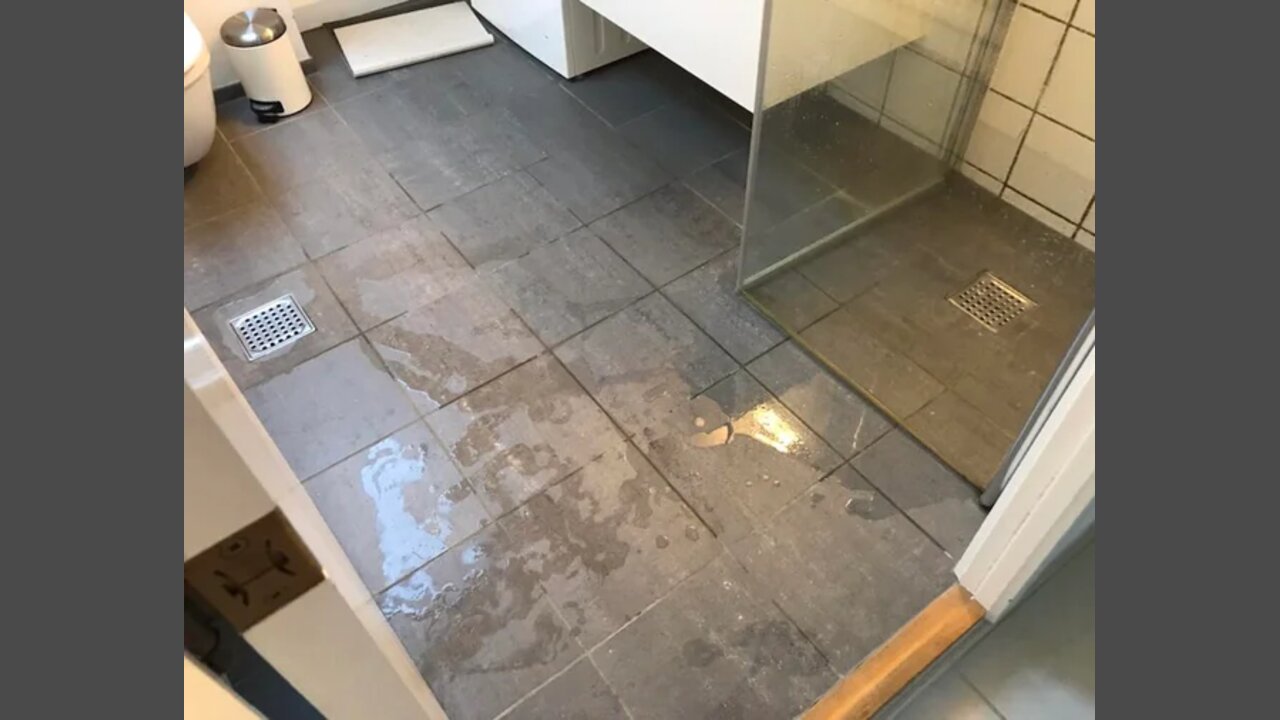
Understanding the effects of a wet bathroom floor is crucial to avoid its negative consequences. Dampness can lead to a foul odor, stains, and the growth of germs. It can also result in water spots, which can be unsightly. Moreover, excessive moisture in the bathroom can risk your home’s safety and the durability of your bathroom tiles.
To protect your home, it is essential to address bathroom moisture promptly. Installing a bathroom fan or utilizing a waterproof membrane under the floor tiles can greatly prevent a damp floor. Additionally, wearing a pair of bathroom slippers with memory foam and ensuring proper ventilation by opening the bathroom window or using window insulation can help combat the issue.
7 Easy Steps On How To Keep Bathroom Floor Dry After Shower
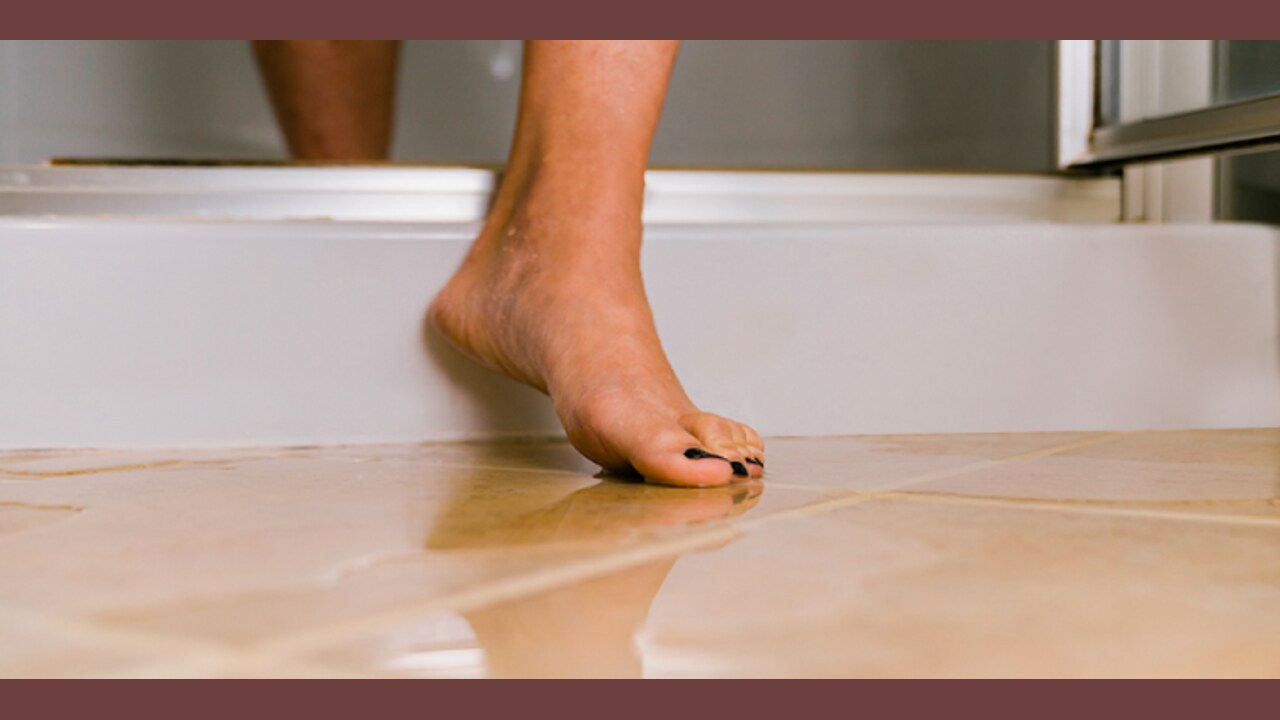
Preventing a wet bathroom floor after a shower is essential to maintain cleanliness and prevent accidents. Finding effective solutions to dry your bathroom floor can save you the hassle of dealing with a damp, slippery surface. Keeping the bathroom floor dry after a shower prevents slips and falls. Here are 7 easy steps on how to keep bathroom floor dry after shower:
Step 1: Install A Shower Enclosure
Installing a shower enclosure is crucial to minimize water spillage and keep your bathroom floor dry after a shower. A shower enclosure prevents water from splashing onto the bathroom floor and minimises excess water accumulation.
A shower enclosure plays a massive role in ensuring a dry bathroom floor by containing any water within the shower area. By installing a shower enclosure, you not only maintain the cleanliness of your bathroom but also contribute to your home’s safety by avoiding damp floors and the potential for slips and falls.
Step 2: Opt For Water-Resistant Tiles
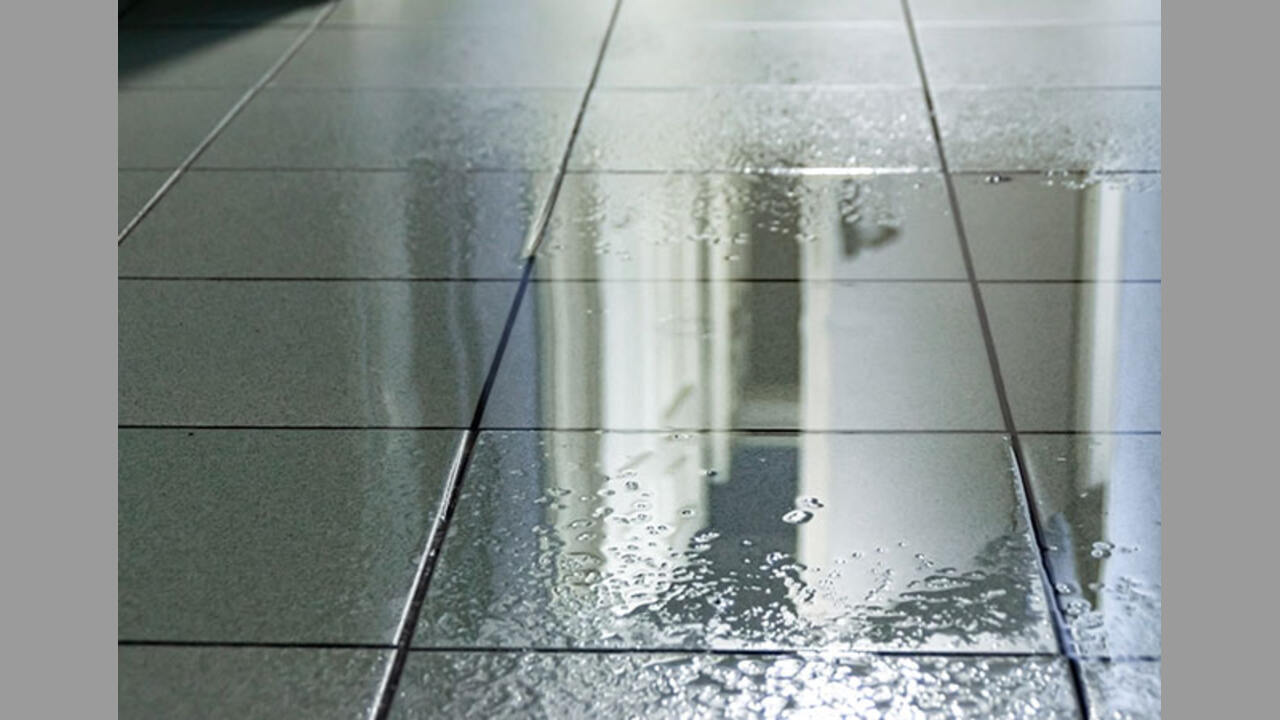
To prevent a wet bathroom floor, opting for water-resistant tiles is crucial. These tiles are designed to resist water absorption, ensuring your bathroom floor remains dry and free from water damage. By choosing water-resistant tiles, you can maintain a clean and hygienic bathroom environment without the risk of a damp floor or the unpleasant smell that often accompanies it.
Protect your bathroom floor from excessive moisture and stains by installing these tiles, as they play a massive role in ensuring your home’s safety and preventing any potential damage caused by water. Say goodbye to water spots, germs, and foul odors, and enjoy a dry bathroom floor with the help of water-resistant tiles.
Step 3: Place A Bath Mat
One effective step is to place a bath mat to keep your bathroom floor dry after a shower. Doing so can prevent water from reaching the bathroom floor and minimize the wetness caused by water spills. A bath mat is a protective barrier, ensuring your bathroom floor remains dry and free from water spots.
Additionally, placing a bath mat also adds an element of safety, as it helps to prevent slips and falls on a damp floor. Incorporating a bath mat into your bathroom routine plays a massive role in keeping your bathroom floor dry and maintaining cleanliness and hygiene.
Step 4: Keep Bathroom Slippers Handy

It’s important to keep bathroom slippers handy to maintain a dry bathroom floor. Wearing bathroom slippers can prevent a wet floor and minimize water tracking onto the tiles. Having a pair of bathroom slippers readily available ensures that you always have a way to keep your bathroom floor dry after a shower.
Bathroom slippers play a massive role in keeping the floor dry by absorbing excess moisture. So, invest in a comfortable and slip-resistant pair of slippers to keep your bathroom floor dry and prevent any damp smell or foul odors.
Step 5: Utilize A Dehumidifier
Utilizing a dehumidifier plays a significant role in keeping your bathroom floor dry after a shower. The dehumidifier effectively minimises humidity and dampness, preventing excess moisture from accumulating on the bathroom floor. Its spinning function extracts moisture from the air, reducing water spots and wet areas.
Furthermore, by controlling moisture levels, a dehumidifier helps maintain a dry floor, preventing stains, foul odors, and the growth of germs. Use this powerful tool to create a fresh and dry bathroom environment. Remember, optimal airflow and a dehumidifier work hand in hand to ensure your home’s safety and a pleasant bathroom experience.
Step 6: Open Windows For Adequate Ventilation
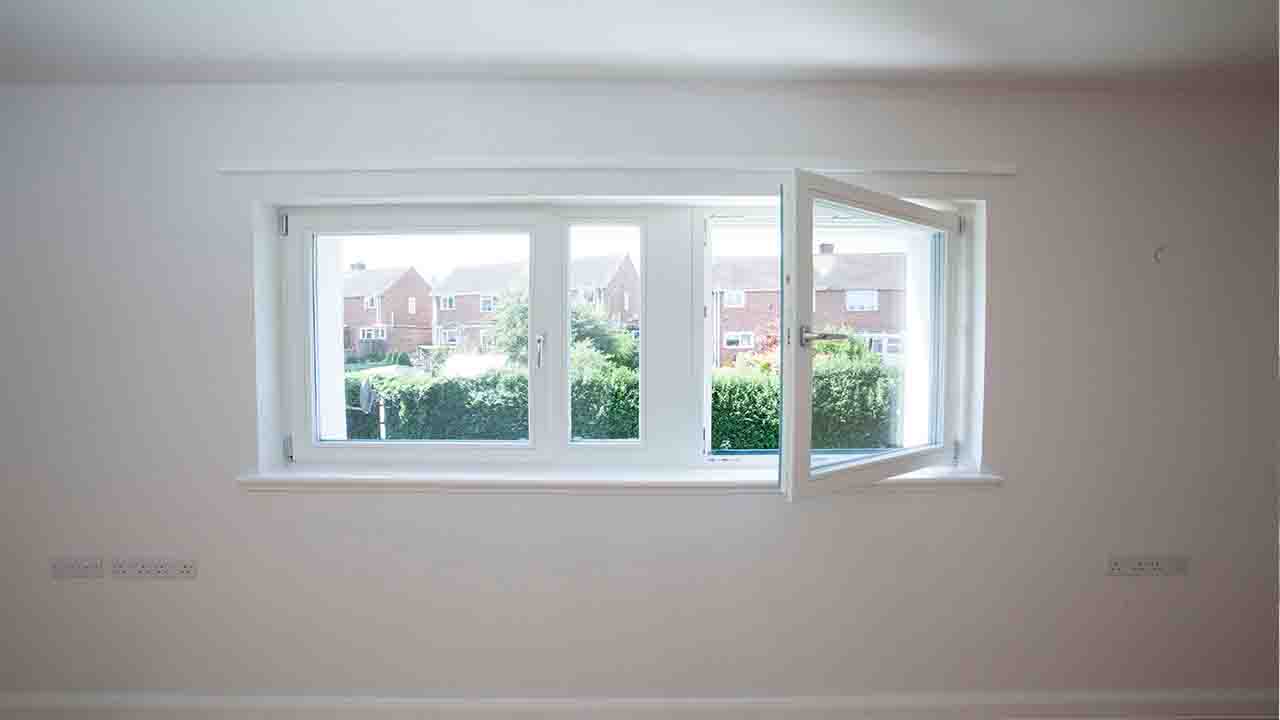
To keep your bathroom floor dry after a shower, adequate ventilation is vital. Proper air circulation is essential to prevent moisture buildup, which can lead to issues like mold and mildew growth. One effective way to improve ventilation is by opening windows in your bathroom.
This allows fresh outdoor air to flow and humid air to escape, reducing humidity levels. If your bathroom doesn’t have windows, consider installing an exhaust fan to remove moisture. Additionally, regular cleaning and drying of surfaces in your bathroom can help prevent moisture buildup.
Step 7: Clean Regularly With A Spin Mop
Regular cleaning with a spin mop is essential to keep your bathroom floor dry after a shower. A spin mop is a highly effective tool that quickly and efficiently absorbs water from the floor. When using a spin mop, use a safe cleaner for your specific flooring type.
Regular cleaning is important to prevent the buildup of dirt and grime and maintain a hygienic and fresh bathroom environment. You can also consider using a steam mop to sanitize your bathroom floor without chemicals. After each use, remember to rinse your spin mop thoroughly to prevent the spread of bacteria.
Additional Considerations For A Dry Bathroom Floor

Keeping the bathroom floor dry after a shower prevents slips and falls. In addition to the usual tips of using a bath mat and wiping excess water. Following these additional tips, you can ensure your bathroom floor stays dry and safe after every shower. Some additional considerations can help keep your bathroom floor dry:
- Install A Shower Curtain Liner: A shower curtain liner can provide an extra layer of protection against water splashing out of the shower. Make sure to choose a long liner to reach the bottom of the tub or shower floor.
- Use A Squeegee: After each shower, use a squeegee to remove water from the shower’s walls and floor. This can help prevent water from seeping onto the bathroom floor.
- Consider A Waterproofing Treatment: If you have a tiled bathroom floor, applying a waterproofing treatment can help prevent water from seeping through the grout and causing damage. This can be especially beneficial in bathrooms with high humidity levels.
- Check For Leaks Or Drips: Regularly inspect your showerhead, faucets, and pipes for any leaks or drips. Even small leaks can contribute to water accumulation on the bathroom floor over time.
How To Deal With Non-Waterproof Bathroom Floors?
Dealing with non-waterproof bathroom floors can be a challenge, but there are several steps you can take to keep your floor dry after a shower. First, make sure to use a bath mat or rug that is designed to absorb water and provide traction.
This will help prevent slips and falls while also absorbing any water that may drip off you as you step out of the shower. Additionally, consider using a shower curtain liner or installing a shower splash guard to prevent water from splashing out of the shower and onto the floor. If your bathroom floor is particularly prone to getting wet, you may want to invest in a waterproofing solution or consider replacing the flooring altogether.
Reasons Why Bathroom Floor Can Become Wet After Shower
There are several reasons why your bathroom floor may become wet after a shower. One common reason is improper sealing or caulking around the edges of your shower or bathtub, allowing water to seep onto the floor. Another reason could be a leaky showerhead or faucet, which can cause water to spray outside the shower area.
Additionally, water can splash onto the floor if your shower curtain or door does not provide proper coverage. It’s important to address these issues to prevent water damage and dry your bathroom floor.
How To Prevent The Bathroom Floor From Becoming Wet?

Preventing the bathroom floor from getting wet after a shower can help maintain a clean and safe environment. By implementing these tips, you can minimize the amount of water on your bathroom floor and maintain a dry and safe environment. Here are some tips to keep your bathroom floor dry:
- Use A Shower Curtain Or Door: Installing a shower curtain or door can help contain water within the shower area and prevent it from splashing onto the floor.
- Place A Bath Mat Or Rug: Placing a bath mat or rug outside of the shower can provide an absorbent surface for any water that may drip off when stepping out of the shower.
- Use A Squeegee Or Towel: After showering, use a squeegee or towel to quickly remove any excess water from the shower’s walls and floor. This can help prevent water from spreading onto the bathroom floor.
- Keep Windows And Doors Closed: If you have windows or doors in your bathroom, close them tightly during showers to prevent any water from seeping out.
- Fix Any Leaks Or Drips: Regularly check for leaks or drips in your shower fixtures and promptly repair them. Even small leaks can contribute to excess moisture on the bathroom floor.
Conclusion
Keeping your bathroom floor dry after a shower is essential for safety and maintaining the longevity of your flooring. By following the simple steps on how to keep bathroom floor dry after shower, such as installing a shower enclosure, using water-resistant tiles, and utilizing a dehumidifier, you can prevent slips and falls and keep your bathroom floor clean and dry.
Regular cleaning with a spin mop and ensuring adequate ventilation through open windows will further help maintain a dry bathroom floor. Remember, taking these preventive measures saves you from potential accidents and prolongs the life of your bathroom flooring. So, make it a habit to keep your bathroom floor dry after every shower.
Frequently Asked Questions
1.Why Is My Bathroom Floor Always Wet After Shower?
Ans: Water splashing out of the shower or bath is a common reason for a wet bathroom floor afterwards. Inadequate shower curtains or poor ventilation can also contribute to the problem. Using a bathmat or towel to absorb excess water can help dry the floor.
2.Is It OK To Leave Bathroom Floor Wet?
Ans: Leaving the bathroom floor wet after a shower is not recommended. It can create slip hazards and promote mold and mildew growth. Use a bath mat or towel to absorb excess water, and ensure proper ventilation in the bathroom to prevent moisture buildup.
3.Why Is My Bathroom Floor Wet After Shower?
Ans: One common reason for a wet bathroom floor after a shower is water splashing outside the shower or tub. Another possibility is a leaky showerhead or faucet, causing excess water to accumulate. Poor ventilation can also lead to moisture buildup and condensation on surfaces, including the floor. To prevent this, consider using bath mats, installing a shower curtain or door, and ensuring proper ventilation.
4.How Do You Waterproof Bathroom Floor And Walls?
Ans: To waterproof bathroom floors and walls, start by thoroughly cleaning the surfaces. Apply a waterproofing membrane or coating according to the manufacturer’s instructions. Use a waterproof sealant to fill any gaps or seams. Consider using naturally water-resistant materials like tiles for added protection.
5.What Are The Best Methods To Prevent A Wet Bathroom Floor After Showering?
Ans: To prevent a wet bathroom floor after showering, use a non-slip rug or shower mat, install a shower curtain or glass enclosure, squeeze the walls and floor to remove excess water, and promote air circulation by leaving the bathroom door open or using an exhaust fan.

